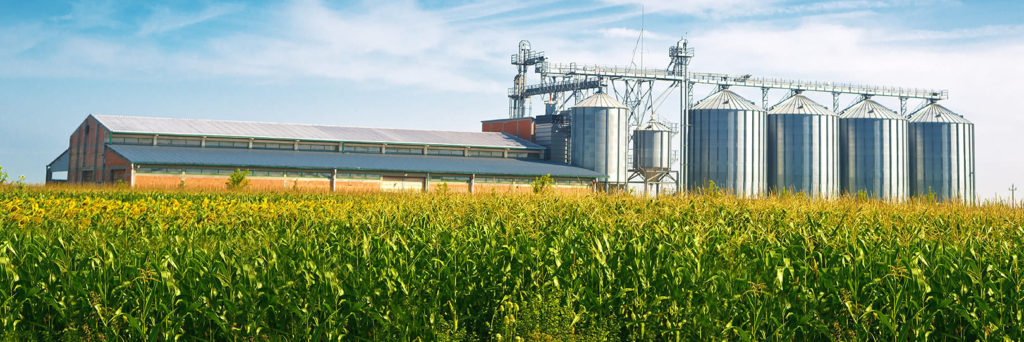
Learn definitions of commonly used terms in smart farming. The terms include Agriculture 4.0, agronomic data, farming-as-a-service, precision agriculture, and more.
Aerial imagery: Photos taken from the air, often with UAVs in smart farming. Used to assist farmers to determine the condition of a field.
Agriculture 4.0: An analogy to Industry 4.0. It is the integrated internal and external networking of farming operations as a result of the emergence of smart technology in agriculture.
Agro-chemicals: Chemicals used in agriculture, which include fertilizers, herbicides, and pesticides.
Agronomic data: Data derived from activities and conditions on farm fields. The data can include soil analysis, nutrient information, hybrid selection, plant populations, and yield data.
Agronomist: A person who specializes in the science of agronomy.
Agronomy: The science of field-crop production and soil management.
Algorithm: A mathematical formula that may be used to control variable rate applications.
Artificial intelligence (AI): The computer simulation of intelligent behavior such as decision making. AI can refer to anything from a computer program playing a game of chess, to a voice-recognition system like Amazon’s Alexa interpreting and responding to speech.
Big data: Information collected in large and varied data sets, typically from IoT sensors and devices.
Big data analytics: Examining large and varied data sets, known as big data, to reveal hidden patterns, unknown correlations, market trends, and customer preferences that can be used in decision making
Center pivot irrigation systems: Typically apply a relatively uniform amount of water to a field.
Farming-as-a-service: Known as FaaS, this is when farmers use a subscription or pay-per-use basis to technology and data. It’s ideal for small- to medium-size farms to access data-driven decisions to boost productivity and efficiency, including farm management solutions, production assistance, and access to markets.
The Feed Silo Optimiser is available as a FaaS product.
Geographic data: Information about the spatial location and the item being monitored, whether it’s yield, seed population, or something else.
Georeferencing: Adding geographic data to yield data or other field attributes either in real-time or after data is gathered.
Global Positioning System (GPS): A system using satellite signals to locate and track the position of a receiver/antenna on earth.
Grid mapping: Predetermined locations in a field where soil or plant samples may be obtained for analysis. The test information can be used for assessing fertility needs and determining approximate locations for varying fertilizer and lime applications.
Grid sampling: The collection of samples from small, uniform-sized cells based on a systematic grid laid out across a field.
IoT: The Internet of Things (IoT) includes billions of devices connected to the internet through sensors or Wi-Fi. Each device collects data, and this data, known collectively as big data, is exchanged and analyzed.
LANDSAT (LAND SATellite): US satellites used to study the earth’s surface using remote sensing techniques.
Machine data: Information on how equipment is functioning. This can include fuel consumption, machine health indicators, diagnostic codes, and engine performance.
Machine learning: Machine learning is a subfield of AI. The core principle is that machines take data and learn for themselves.
Phenome: The set of physical and biochemical traits belonging to an organism.
Phenomics: The measurement of phenomes.
Precision agriculture: Also called smart farming or precision farming. It includes a range of technologies, including remote sensing, IoT devices, robotics, big data analytics, and artificial intelligence, to form an integrated crop and livestock production management system on a site-specific basis to increase profits, reduce waste, and maintain environmental quality.
Production agriculture: A series of activities that result in a product that will ultimately be sold at retail.
Remote sensing: Scanning an object by satellite or high-flying aircraft in order to obtain information without direct contact between the sensor and the object.
Row-crop tractor: A tractor with an adjustable tread width to allow the tractor to pass down rows of corn, tomatoes, or other crops without crushing the plants.
Self-driving tractor: This driverless tractor is an autonomous farm vehicle that delivers high torque at slow speeds.
Smart farming: The use of new technologies to change centuries-old methods of farming.
Soil map: A map showing differences in soil properties such as texture, fertility, organic matter, and pH within a field.
Sustainable intensification: Farming with a goal to increase production from existing farmland while minimizing damage to the environment, preserving biodiversity, and protecting the land for future crops.
Telematics: The integrated use of communications and information technology to transmit, store and receive information from telecommunications devices to remote objects over a network.
All Shock Wave Engineering products employ a robust, highly available farm mesh network for communications. This eliminates the need for the costly laying of network cables around the farm and the need for multiple cellular data contracts and devices.
Total Factor Productivity (TFP): A measure of agricultural productivity that takes into account all of the land, labor, capital, and material resources utilized in farm production and compares them with the total amount of crop and livestock output.
UAV: Stands for Unmanned Aerial Vehicle and is an aircraft piloted by remote control or onboard computers. Commonly known as a drone.
Variable rate irrigation: An emerging technology that is being used in conjunction with center pivot irrigation systems.
Weather data: Information about precipitation, wind, temperature, and other climate conditions.
Adapted from TechRepublic